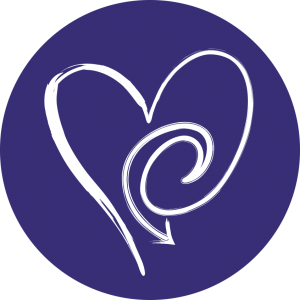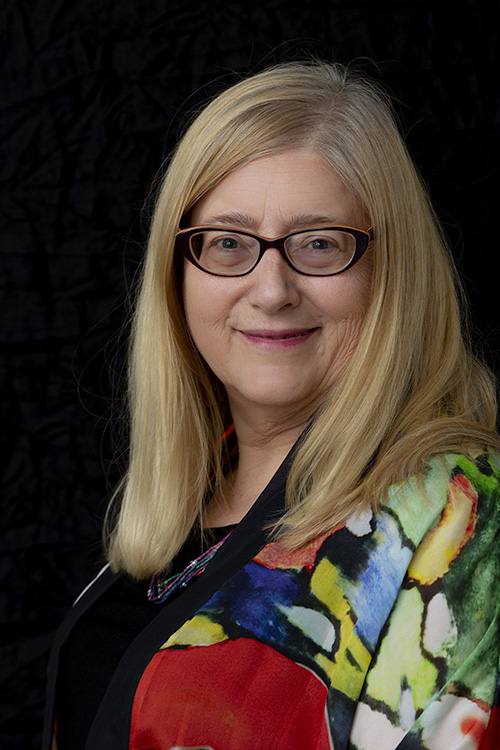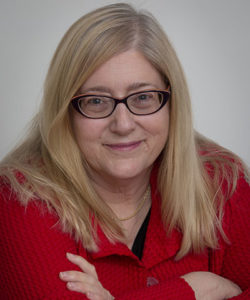A Crone’s Quest
Fifteen years ago a cyst consumed most of my right ovary. I had it removed. Not long after, I saw a new doctor who looked at my records and said, “I see you are missing an ovary.”
“Not really,” I said. “I hardly ever think about it.”
Nor do I miss my uterus and the other ovary, both of which departed ten years ago. When Nora Ephron said to “cut out all the things—people, jobs, body parts—that no longer serve you,” she could have been talking about my uterus.
A breast, though, is not like those tucked-away body parts. It’s right upfront, a visible reminder of babies (and of lovers).
In 2024 a mammogram showed a line inside a mammary duct that might have been just a harmless calcification or might contain a carcinoma. I went through the Watchful Waiting phase (see my essay from back then, Schroedinger’s Breast) because I knew that even if it was a Ductal Carcinomas In Situ (DCIS), half of them never amount to anything. The catch is, nobody can predict which ones of this tumor type will grow (If men had this problem, I’m convinced somebody would have developed a predictive test long ago). My next mammogram showed the calcification had doubled in size.
Next step was a biopsy. I walked in knowing there was some evidence that core needle biopsies can seed new tumors. What I didn’t know then was that biopsy technique makes a difference. And I had no warning that my biopsy at a North Carolina teaching hospital would be performed by an unskilled medical student, with minimal pain relief and maximum bruising. I’d never had a biopsy before and thought they were all like that (Even so, I complained about it in my newsletter.)
The pathology report showed DCIS, identified as a stage zero cancer. Or not even zero; an oncologist I consulted said, “What are you doing here? This thing isn’t really a cancer.” I had the tumor removed, but not the whole breast. Then I had radiation therapy that’s supposed to kill off any escaped cells. It didn’t.
Six months later I had a suspicious mammogram on the same side. The folks at the teaching hospital invited me in for another biopsy. I was in contract to sell my house and was busy packing boxes; no lifting allowed with a fresh biopsy. I put off the procedure until after the move to the West Coast.
This time, the biopsy was conducted at a medium-sized Oregon hospital by an experienced radiologist, with the able assistance of a robot. Before we started I told the radiologist that the suspicious dots on the North Carolina mammogram had been so tiny that the doctor who showed me the scan said, “Hallucinate with me.”
The radiologist laughed and said, “These days almost all mammograms have AI assistance, and it often does hallucinate.”
“Why are we doing this? Are we chasing a ghost?” I asked. But by then I was face down in the contraption the nurse affectionately called the “booby trap.” I wasn’t going anywhere.
And just as well. This biopsy was easy: very little tissue trauma, very little bruising. Afterwards the nurse coached me to apply pressure with the heel of my hand to limit bleeding (nobody at the teaching hospital told me that). And the pathology result? A second DCIS.
We try to make meaning from the material life throws our way. I took an online goddess class with Minette Riordan this week and my Inner Goddesses are working overtime. One of the goddesses Minette talks about is the Meaning Maker, and She in particular is running full tilt: Why a second tumor so soon? Is it because of my first, botched biopsy? Or is it because I use an estrogen patch? Or something else entirely?
Back in North Carolina, the surgeon had recommended I start taking an aromatase inhibitor: a drug designed to inactivate the estrogen in a woman’s body, on the theory that estrogen feeds breast cancer cells. I declined. For one thing, I had just read an observational study of ten million women on Medicare showing that those who took Hormone Replacement Therapy (estrogen ) had a 19% lower mortality rate during the study period—including a 16% lower rate of breast cancer! Here’s a quote from the study:
Compared with never use or discontinuation of menopausal hormone therapy after age 65 years, the use of estrogen monotherapy beyond age 65 years was associated with significant risk reductions in mortality (19% or adjusted hazards ratio, 0.81; 95% CI, 0.79-0.82), breast cancer (16%), lung cancer (13%), colorectal cancer (12%), congestive heart failure (CHF) (5%), venous thromboembolism (3%), atrial fibrillation (4%), acute myocardial infarction (11%), and dementia (2%).
Estrogen connects with cells all over the body and promotes heart health, brain health, muscle health and cardiovascular health. That last one I knew personally because my atrial fibrillation developed when I was briefly taken off estrogen years ago. Logically I’d expect a drug designed to stop production of estrogen to detract from health in many ways; no surprise that many women prescribed these drugs stop taking them. A Columbia University study of optimal DCIS treatment that factored in quality of life as well as longevity concluded that aromatase inhibitors were not worth pursuing.
Avril Bluming, who wrote the influential book Estrogen Matters, also wrote a medical journal article analyzing the limited available data on use of estrogen therapy after breast cancer. His conclusion? It’s still a good idea. But was it, in my case? With a second tumor, I have to wonder. I know enough to know that we are all different, and our medical care is based on incomplete information at best.
It’s also true that my mother and her mother had breast cancer—which might contribute to the likelihood that I’d get it, or might be a coincidence. I consulted a breast cancer surgeon last week, who recommended genetic testing before we decide on treatment. When these results come back, there will be more information, but again incomplete: The genetic counselor said there are likely more contributing genes than have been identified yet.
And now there is some evidence that COVID and other respiratory infections can reactivate breast cancer cells.
As I prepared for my surgical consult, I looked back, not only at medical journal articles, but also at my own writing over the course of this cancer journey. My conclusion is that medical knowledge has progressed since my grandmother’s day, but it hasn’t progressed far enough. All we can do when mapping out treatment is push to the edges of what is known.
A Crone’s Quest?
What does seem clear is that the twice-affected breast must go, just like Nora Ephron said.
A while back I wrote, “Retirement is a lovely vacation that ends in death.” And now, ironically, I’m on my way to an actual vacation that ends in surgery. How to make meaning of that? And truly enjoy it? A journey is a classic metaphor. While the Hero’s Journey is to claim vulnerability, the Heroine’s Journey is to claim audacity.
Each gender seeks the thing our hormones deny us; and as our hormones shift later in life, we embrace both vulnerability and audacity to become our whole selves. And even beyond that: I’m thinking that the Crone’s Journey is to claim impermanence and embrace ambiguity. To say yes to all that is unknown. To welcome the unfolding of new days in new places.
And so I am on my way to Italy, to claim it all, plus some really good pasta.



4 Responses
Hey, Stella – thanks for sharing this story. Hope you enjoy the pasta!
So sorry that this saga is continuing Stella… re. Natalie’s comment; I have had thick calcifications in my breasts for over 30 years. I imagine that Natalie’s reasoning might be based on the fact that once the breasts become calcified.. you can’t read the mammograms… but nonetheless, none of my doctors have ever mentioned the idea of surgery. As far as sugar goes… I am 100 percent convinced that sugar causes multiple forms of inflammation in the body so keeping sugar to a minimum is ALWAYS a great idea. My two cents.
A friend of mine did research (a Ph.D.) into breast cancer 15-20 years ago. She discovered that breast cancer is different from all other cancers—and that once there is calcification, the smartest move is removing both breasts right away. That way, there’s spreading and no recurrence. I wish that you—and so many other women—had known this earlier. Good luck to you—and please spread the word.
I also want you to have the “cancer diet” [from my biochemist, my main doctor] that saved my life 25 yrs. ago when I had uterine and ovarian cancer at the same time. My being on that diet for 3.5 weeks kept the ovarian tumor from growing between the diagnosis and the surgery—and my gynecologist said she’d never seen such a large tumor that was so perfectly round, i.e., that hadn’t begun to morph toward invading other organs.
The diet is based on the fact that cancer cells feed on certain kinds of sugars.
NO added sugars, no “-ose” (including honey) of any kind. Read labels.
NO fruits (including tomato and avocado)
NO grains.
70% of diet: all vegetables (except white potato), including vegetable oils like olive oil
30% of diet (10% per meal, to balance blood sugar): pure proteins (e.g., meats, poultry, fish, beans, nuts, seeds, eggs, cheese)
Stay on diet until surgical removal of tumor(s).
PS: Another friend had a lump in her breast 30 or 40 years ago. The doctor said that [whatever treatment he recommended] had 87% success. She asked, “And what’s the success rate if I have them removed?” She said he looked startled, then said, “Oh, 100%.” Her response: “I’m neither a gambler nor a fool. I want them off.” And she had a good long life.
Again, please spread the word—and I wish you good health and a long life.
Hi Natalie – I hesitated to publish your comment because you’re simply wrong. Calcifications are extremely common among older women and in many cases they are benign. If women took your incorrect advice and had their breasts removed as soon as they had calcifications, they would undergo unnecessary surgeries which are expensive, carry some degree of risk, and take time and energy away from the enjoyment of their older lives. Please read Barbara Ehrenreich’s important book, Natural Causes, on the pitfalls of an overmedicalized life. And please stop giving terrible advice about unnecessary surgery.
With regard to sugar and cancer, there is no evidence that a sugar-free diet lowers the risk of getting cancer, or improves survival if a person has cancer. Please read some medical journal articles and, again, stop spreading misinformation.
Cheers,
Stella